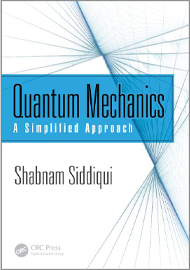
There is a vast number of widely used introductory quantum mechanics books, each having its strengths and weaknesses. What is special about this introductory undergraduate text?
The book follows the usual outline of similar textbooks, after two introductory chapters on the history of the development of quantum theory. The bulk of the book (chapters 3 to 7) covers using the Schrodinger wave equation approach (though there is a brief discussion of matrix mechanics), the time evolution of the wave function, particles in potential wells, the harmonic oscillator, the hydrogen atom, angular momentum and perturbation theory (including its time-dependent form). The concluding chapter briefly discusses quantum computers.
The mathematical requirements are very basic, and every single derivation is completely worked out step by step without recourse to the usual “it can be easily shown that ...”—a construct prevalent in many textbooks that can cause students plenty of frustration. What is different about the book are the tutorials in each chapter (which are often linked to the PhET (free online physics) website for simulations) as well as additional conceptual questions. I also enjoyed the “discussions” between the “friends” representing classical and quantum viewpoints. There are even blank spaces after each question for the student to write down their answers, making this more like a workbook.
Overall, this is a simple introductory guide to certain aspects of quantum theory and can be used for self-study very effectively (and as an adjunct to one of the more standard texts).
Review by Vengu Lakshminarayanan, University of Waterloo, Canada
The opinions expressed in the book review section are those of the reviewer and do not necessarily reflect those of OPN or OSA.
